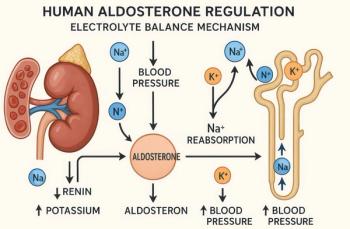
Dabigatran May Pose Excess Risk in Patients With Mechanical Valves
Patients with mechanical heart valves are not candidates for dabigatran; excess bleeding curtailed the first study to test it.
As clinicians become more familiar with the novel oral anticoagulants, patients are increasingly being transitioned from traditional vitamin K antagonists to these agents as a result of their greater ease of use and favorable clinical profiles. Multiple clinical trials have demonstrated non-inferiority (and, in some cases, superiority) of the new oral direct thrombin inhibitors and oral factor Xa inhibitors to warfarin. These results extend to indications that include non-valvular atrial fibrillation and treatment and prophylaxis of venous thromboembolism and pulmonary embolism. Missing has been data for use of the novel anticoagulants in patients with mechanical cardiac valves . . . until now.
The first report of a randomized unblinded trial of a novel anticoagulant versus warfarin in patients with mechanical valves was just presented at the European Society of Cardiology Congress in Amsterdam and simultaneously published in The New England Journal of Medicine. The results, unfortunately, were somewhat disappointing. The RE-ALIGN trial, initially designed to be a phase 2 dose-validation study, tested 3 dosages of dabigatran (150 mg, 220 mg, 300 mg twice daily). Doses were based on pharmacokinetic simulations of the study drug in RE-LY trial. Dosage group was chosen based on renal function at the time of randomization and was adjusted during the study to achieve a dabigatran trough of ≥50 ng/mL. Patients were randomized 2:1 to dabigatran or warfarin (with goal INR 2 to 3 or 2.5 to 3.5, based on thromboembolic risk). There were 2 study populations: those who had undergone aortic or mitral valve replacement within the past 7 days (population A) and those who had undergone such replacement >3 months earlier (population B).
An increase in thromboembolic and bleeding complications in the patients in the dabigatran group led to early termination of the trial after enrollment of only 252 patients. The primary endpoint reported was the trough level of the dabigatran; additional efficacy and safety endpoints were also analyzed (Table). Dose adjustment or discontinuation of dabigatran (based on the primary endpoint) was required in 52 of 162 patients (32%).
Several mechanisms have been put forth to explain the observed increase in risk associated with dabigatran:
1. increased bleeding and thrombotic potential in the immediate peri-operative period (which constituted the majority of the study population),
2. use of fixed-dose regimen when thrombotic and bleeding potential are high,
3. the lower than expected plasma concentration of dabigatran in the first 4 weeks following randomization, and
4. the inherent differences in the biology and mechanisms of thromboembolism and stroke in atrial fibrillation compared with mechanical valves.
The adverse risk profile of dabigatran that emerged in this study may dampen some of the enthusiasm in the anticoagulation world. At this time, though, there is no role for novel oral anticoagulants in patients with mechanical valves. It remains to be seen, however, whether additional studies with the factor Xa agents will emerge to further illuminate this possibility.
Source
Eikelboom JW, Connolly SJ, Brueckmann M; for the RE-ALIGN Investigators. Dabigatran versus warfarin in patients with mechanical heart valves. N Engl J Med. 2013 Aug 31. [Epub ahead of print] (
Newsletter
Enhance your clinical practice with the Patient Care newsletter, offering the latest evidence-based guidelines, diagnostic insights, and treatment strategies for primary care physicians.



